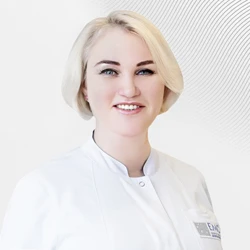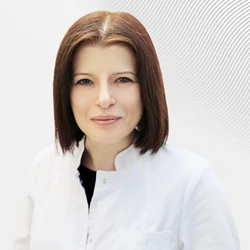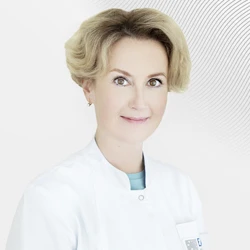It's only the size of a finger, but it can control our waist width, mood, and desire to live in general. Keep her under control.
 Olga Yatsishina, PhD, endocrinologist at the EMC, acted as an expert in an article in the journal Women's Health.
Olga Yatsishina, PhD, endocrinologist at the EMC, acted as an expert in an article in the journal Women's Health.
The thyroid gland is shaped like a butterfly. It consists of two lobes connected by an isthmus, and is located in front of the trachea, covering it from the front from the sides. The main function is to provide a person with thyroid hormones, which are necessary for the normal functioning of almost all organs and systems; substances stimulate the brain and intestines, regulate the menstrual cycle, ensure the health of the skin, nails and hair, and regulate energy production. Women are 12 times more likely to develop thyroid problems than men. This may be due to the fact that women are more susceptible to autoimmune diseases (such as systemic lupus erythematosus and rheumatoid arthritis). Thyroid disorders are often caused by genetics, but environmental factors also affect, in particular ionizing radiation and radionuclides. According to recent studies, the risk of damage to a small but important organ is also increased by a substance used in the manufacture of non-stick cookware and water-repellent coverings for carpets and sofas.
All disorders are divided into two types - decreased thyroid function (hypothyroidism) and increased hormone production (hyperthyroidism) - and may be temporary or permanent.
Signs of illness
Hypo- and hyperthyroidism are characterized by opposite symptoms. However, in many cases, the signs of hypothyroidism are less pronounced and develop gradually. There may be an increase in body weight, but this sign alone is not enough to suspect hypothyroidism. Experts primarily pay attention to dry skin, hair loss, forgetfulness, fatigue, frequent chills, constipation and irregular menstruation. An alarm bell should also serve as a feeling of fatigue when doing work that has not previously caused difficulties.
Hyperthyroidism is an overactive thyroid gland (most often, Basedov's disease, diffuse toxic goiter), which is much easier to recognize. Increased hormone production leads to rapid weight loss, increased heart rate, insomnia, and bouts of diarrhea. Patients experience constant agitation, fever and tremor, as if they had been injected with a horse's portion of espresso. Just like with hypothyroidism, the symptoms may increase over time and become more pronounced. Both of these conditions require treatment, which, after an appropriate examination, will be prescribed by an endocrinologist. There are three methods - medication (taking drugs that suppress excessive hormonal secretion), surgery, and therapy with radioactive iodine.
The protection side
The best way to protect yourself is to identify the problem as early as possible. If you have a suspicion, ask your doctor to prescribe an easy-to-perform blood test for thyroid-stimulating hormone (TSH). But - attention! - only if there really are serious reasons for that. Often, patients, especially girls, begin to turn to doctors on a rampage with a request to do an analysis, despite the absence of symptoms - just like that, just in case. The problem is that many women may have TSH in the borderline zone and, although they have no signs of the disease, doctors prescribe unnecessary medications that can lead to hyperthyroidism.
Preventive measures
Carefully look in the mirror at your neck. Follow these simple steps for self-diagnosis every two months.
1. Hold the mirror straight in front of you and visually assess the lower neck area, just above the collarbones.
2. Tilt your head back by moving the mirror with your head.
3. Take a small sip of water
4. While swallowing, evaluate the gland area, noting unusual swellings, protrusions, and seals. (Do not confuse the gland with the adam's apple, which is located above).
5. If you see anything suspicious, contact your doctor.
We have little influence on genetic or autoimmune risk factors, but we can protect our gland by consuming enough iodine. Doctors recommend taking 150 mcg daily (200 mcg during pregnancy and lactation) and quitting smoking: the substances contained in cigarettes increase the risk of developing basal disease. Not only multivitamins and iodized salt, but also regular foods should help protect the thyroid gland. For example, 100 grams of boiled shrimp contains 110 micrograms of iodine, 100 grams of salmon contains 200 micrograms, the same amount of broccoli contains only 15, and the liver of cod contains as much as 370 micrograms. Feijoa, seaweed and persimmon are also rich in iodine. And hopefully, it's not necessary to say that an excess of this great trace element in the body won't lead to anything good either.









.webp)



.webp)


.webp)

.webp)


.webp)
.webp)

.webp)

